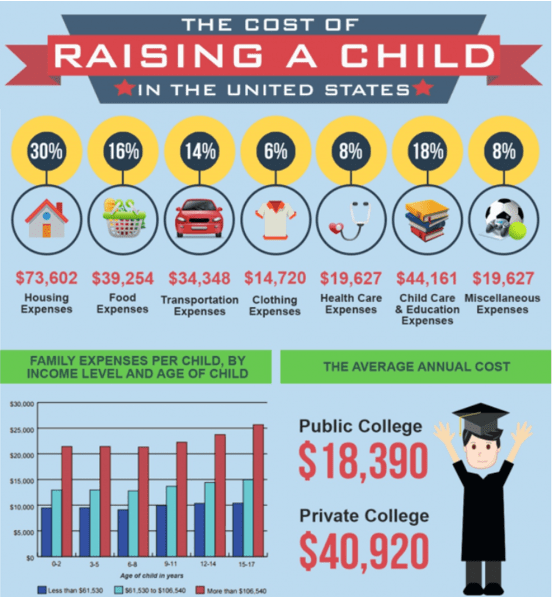Retirement Income Calculator Tool
It’s hard to think about saving for retirement when you’re young—after all, with decades left of working experience ahead, retiring hardly feels real.
To be truly effective, however, creating a solid retirement fund should happen as soon as possible. This also means asking yourself some serious questions about the future, including:
- What age do you want to retire at?
- How much will Social Security contribute to your income?
- What does “living comfortably” mean for your own personal expectations and lifestyle expenses?
The answers to these questions will help you begin evaluating how much of your income you will need to start putting away each month to ensure a comfortable retirement.
For those who want to start saving for retirement but don’t know where to begin, there are plenty of resources to help you determine how much you need to save, and what types of accounts will best help you reach your retirement goals.
What About Social Security?
While Social Security payments can certainly help boost your retirement income, they are not meant to be used as an end-all solution.
In fact, according to Vanguard, the average American can expect their Social Security checks to cover a mere 38 percent of their retirement income.
To put this in perspective, consider this example:
In fact, a 30-year-old making $50,000 per year today—and who might realistically expect to make substantially more by the time he or she retires—can expect less than $22,000 per year from Social Security at age 67 (in today’s dollars).
Best Mortgage Rates in Vermont for Fair-Excellent Credit Borrowers
Current Mortgage Rates in Iowa for Good-Excellent Credit Borrowers



Types of Retirement Savings Accounts
When it comes to saving for retirement, there are plenty of available options for you to save, earn interest, and invest for long-term financial growth.
Many of these retirement savings accounts also come with tax advantages, making it financially feasible to let your money grow over time. The most popular choices include:
- 401(k)s
- IRAs
- Money market accounts
- High-yield savings accounts
401(k)
If your employer provides retirement funding, you may want to consider enrolling in a 401(k) plan. This type of employer-sponsored savings plan takes your contribution and invests it in mutual funds.
Many of these funds include a variety of stocks, bonds, and money market products. As an additional benefit, many employers will match contributions, meaning that you can potentially double your investment.
IRAs
Individual retirement accounts (IRAs) are some of the most popular retirement savings accounts, and there are multiple versions to choose from. These include:
- Traditional IRA—Contribute cash and receive a tax deduction. If funds are withdrawn before the age of 70, a 10 percent penalty tax applies.
- Roth IRA—Contributions are not tax-deductible, but withdrawals are available tax-free at age 59 ½.
- SEP-IRA—Similar to a traditional IRA, but formatted for self-employed individuals.
- Simple IRA—Retirement plan used by small business owners.
Money Market Accounts
Money market account accounts (MMAs) are essentially heightened versions of a traditional savings account. They have a higher rate of return, but they will also have higher requirements for opening deposits and minimum monthly balances.
High-Yield Savings Accounts
Compared to MMAs, high-yield savings accounts are very similar. Both provide long-term growth for retirement savings through higher interest rates and require higher minimum balances, but high-yield savings accounts offer more flexibility.
Most high-yield savings accounts allow for unlimited deposits, withdrawals, and transfers, whereas MMAs will have restrictions for transactions.
Current Mortgage Rates in Oklahoma for Good-Excellent Credit Borrowers
Best Mortgage Rates in Tennessee or Good-Best Credit | 10-15-30-Year Fixed, 5/1, 7/1 ARM
Additional Resources
While it may seem as though saving for retirement is a complicated task, the truth is that there are plenty of ways to make the process as simple and as straightforward as possible.
Along with using a retirement calculator to assess your future financial needs, there are plenty of tools and resources that you can take advantage of.
Vanguard has a host of free retirement planning tools, including worksheets for income and expenses and an IRA comparison.
Personal Capital provides a free retirement planner to help users set goals and plan for life events, while Charles Schwab hosts online workshops to promote financial planning education.
If you have doubts about creating your own retirement plan, you can always enlist the help of a financial advisor to provide expert, personalized guidance for your financial future.
Current Arizona Mortgage Rates | Best Arizona Mortgages & Refinance Rates
Best Refinance & Purchases Loan Rates Today | Lower Interest Rate Payments
AdvisoryHQ (AHQ) Disclaimer:
Reasonable efforts have been made by AdvisoryHQ to present accurate information, however all info is presented without warranty. Review AdvisoryHQ’s Terms for details. Also review each firm’s site for the most updated data, rates and info.
Note: Firms and products, including the one(s) reviewed above, may be AdvisoryHQ's affiliates. Click to view AdvisoryHQ's advertiser disclosures.



